Bamboos are grasses, split into two major groups, Running (invasive or spreading) and Clumping (non-invasive or non-spreading).
Before you plant bamboo, decide what you want to do with it and choose between a running or clumping species.
Running bamboo is an excellent screening plant for privacy between properties because it grows and spreads quickly. But if you plant running bamboo, you'll want to learn how to create barriers to keep it in place or it can take over your yard - quickly! And if you already have running bamboo growing out of control, read further to learn how to kill or contain it


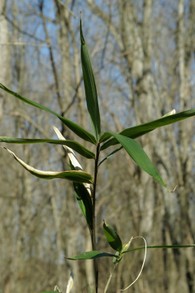
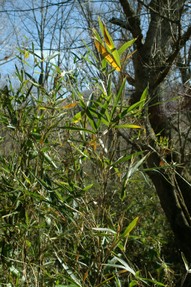 Bamboo has three growth spurts each year. The first is in April and May. Within a month or two, the new shoots will grow into full-sized stems (culms). In June and July, the older existing culms start dropping their leaves and begin growing a new set. In late summer, the grove extends its horizontal root stems (rhizomes), which is how running bamboo spreads.
Bamboo has three growth spurts each year. The first is in April and May. Within a month or two, the new shoots will grow into full-sized stems (culms). In June and July, the older existing culms start dropping their leaves and begin growing a new set. In late summer, the grove extends its horizontal root stems (rhizomes), which is how running bamboo spreads.

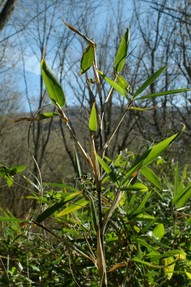 NOTE : If your bamboo grove is shared with a neighbor or has spread into his yard, ask whether he wants to keep his bamboo or get rid of it. Whatever you do regarding your rhizomes will affect the bamboo in his yard, too, unless you separate the grove by cutting the connecting rhizomes and create a rhizome barrier.
NOTE : If your bamboo grove is shared with a neighbor or has spread into his yard, ask whether he wants to keep his bamboo or get rid of it. Whatever you do regarding your rhizomes will affect the bamboo in his yard, too, unless you separate the grove by cutting the connecting rhizomes and create a rhizome barrier.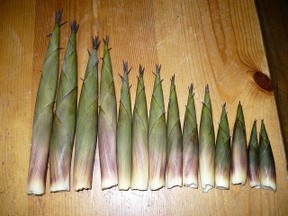 You can boil and eat the underground shoots of running bamboo.
You can boil and eat the underground shoots of running bamboo. 


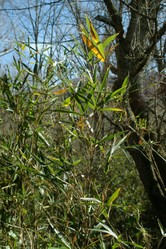

 I Loved to Read in Grade School (in the 1960s)on 09/29/2018
I Loved to Read in Grade School (in the 1960s)on 09/29/2018
 Halloween Memories from the 1960son 09/17/2018
Halloween Memories from the 1960son 09/17/2018
 What on Earth is Earthing?on 06/03/2015
What on Earth is Earthing?on 06/03/2015
 Worm Manure (Castings) Is The Best Organic Fertilizeron 05/25/2015
Worm Manure (Castings) Is The Best Organic Fertilizeron 05/25/2015

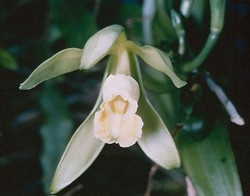
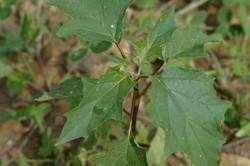
Comments
Bamboo is an amazing grass and you will be surprised to know how useful it is. Tender bamboo shoots is a delicacy, we make curry out of it. Bamboo is also used for making paper. It is one of the fastest growing species in the planet and is used for various purposes. Providing, shelter, house and furniture too.
Marie - there are good used for running bamboo such as helping to control erosion, but it's not so good in a residential area.
My sister could have done with reading this a few years back. She had big problems with bamboo spreading which is luckily now all under control. The root barriers are a great idea for people wanting to keep it contained.
happynutritionist - you can dig up the roots to that bamboo growing alongside the road for free. Did you read cazort's comment below about giant cane? It is a bamboo-like plant that is native to North America.
This is helpful...we discovered that there was Bamboo growing along the side of the road near our town, right up through the snow, all winter, and it was still green, recently has yellowed. But, I am planning to buy some and put it in two spots on our property for privacy, and appreciate the tips on how to keep it under control.
One oddity about grasses that enables their spread is that unlike most plants, which grow from their tip, grasses [including bamboo] grow from just above the root. So chopping them down does not prevent growth. You have to get at the roots. Furthermore, they spread by rhizomes, underground lateral stems that spread widely. All rhizomaceous plants have a powerful tendency to spread. So if you plant bamboo in your garden, you can guarantee that it will spread to other gardens.
cazort - I didn't know about the cane, Arundinaria gigantea, that is native to North America. It's always best to plant native species. I can certainly understand homeowners being aggravated when a neighbor's bamboo invades their yard. It's too bad most homeowners don't understand how their plants and grasses affect the environment.
Here in San Antonio, the Botanical Gardens has native plant sales each year, which also needed to educate people on what to plant that doesn't need much water. We've been on water restrictions (lawn watering) for years.
I wouldn't ever plant bamboo outside its native range, because of how difficult it can be to control.
One thing to consider is that it can create legal liabilities for you. In the neighboring township to where I live, I've heard of people being fined thousands of dollars (with ongoing fines charged per day) for bamboo they planted, spreading onto neighbors' properties.
I also would be reluctant to buy a property with bamboo growing on it--the reason is that I'd want to remove it ASAP if I owned the property, and I realize that removal would be costly and/or labor intensive, so it would effectively decrease the value of the property because it would be something I'd have to pay for out of pocket.
Do you know about giant cane, or Arundinaria gigantea? It is a bamboo-like plant that is native to North America. It was decimated by European settlers to North America, and it currently exists only in smaller populations. By planting the native giant cane, you can help to restore and protect ecosystems. It creates habitat for numerous native butterflies and birds, and like bamboo, it has many uses by humans too. Non-native bamboo will create an ecological dead zone--you can have a very similar looking plant (some people can't even distinguish them) but have a much more positive ecological impact by planting the native giant cane.
Thank you for this information.
frankbeswick - When you mow bamboo over and over again, you'll eventually kill it as each new growth comes up weaker until it ends up more like a grass without stalks. But this process can take up to a year. If you fertilize the bamboo, it'll grow up faster so you don't have to wait so long between mowings, and then you'll end up with the weak bamboo that you can kill off with a vinegar solution.
Using glyphosate is one way (and a faster way) to kill bamboo, but to do it properly, you'd want to use a brush to paint it on the stems so the chemical doesn't leach into the ground as much. I don't like the idea of using chemicals in the ground.
Personally, I'd chop the bamboo to the ground, mow it, and then lay some heavy cardboard or carpet scraps over it and weigh it down with bricks or heavy rocks. But some people might not want to do this because it won't look nice while waiting for the bamboo to die.